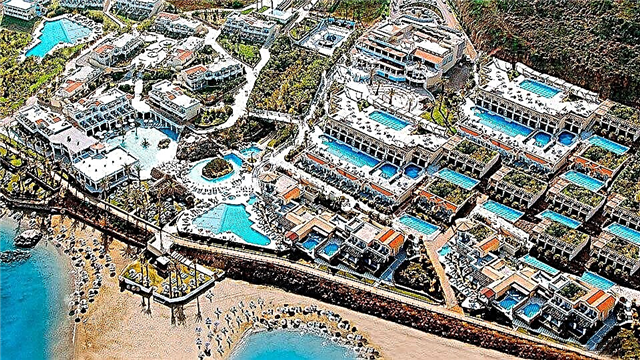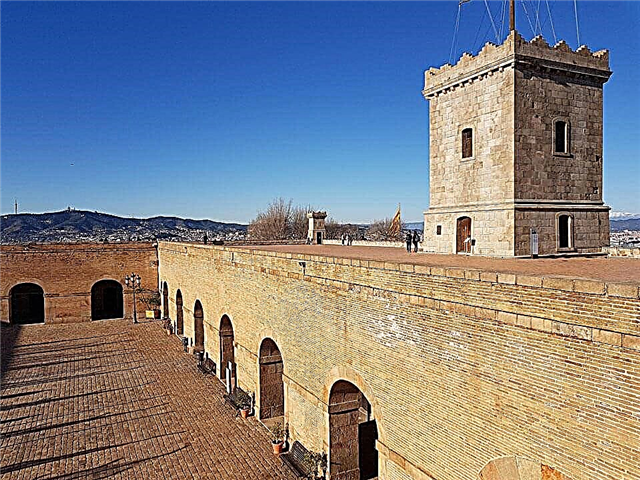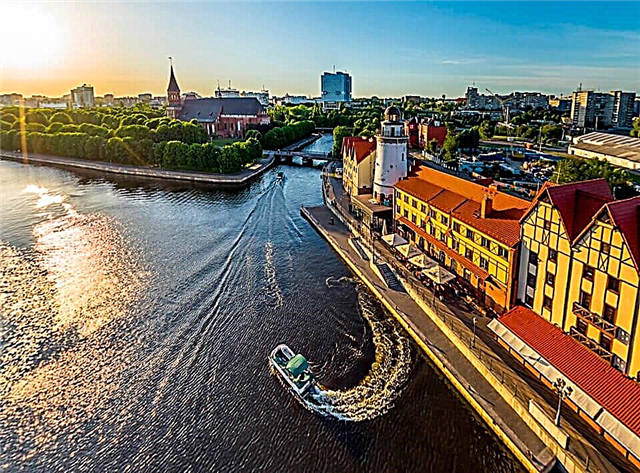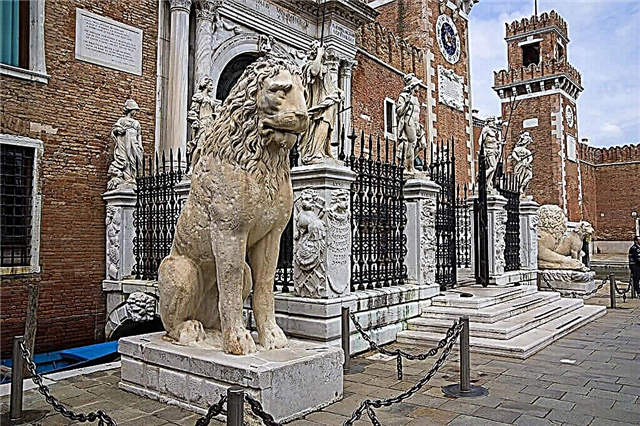Mighty ancient towers do not sparkle with the lights of modern lighting, do not ring from the sounds of melodies. You can't see sentries on them. Only the splash of waves is reflected in the gloomy walls of the majestic complex that played an important role in the history of Venice. Its most important pages are guarded by the famous Venetian arsenal.
Tourists, for whom Venice has long become a favorite travel destination, will definitely come to these ancient walls and listen to the history of the huge shipyard founded in the 12th century.
History of the Venetian Arsenal
The city of Venice, which appeared in the 9th century, has always been a strategic center of trade relations between the East and Europe. Located on the numerous islands of the Adriatic Sea, it has always been famous for its bridges, canals, channels that shape the living conditions of the townspeople. A tasty piece of land, created by nature, had to be protected from enemies. Participation in the crusades and wars required the creation of powerful warships. Perhaps that is why the hardworking residents of the city are considered the pioneers of shipbuilding in the world. Their engineering thought made it possible to change the shipbuilding technology used by the ancient Romans. For the first time, a unified standard of requirements for a military vessel appeared, a conveyor method of production was proposed.
For the production of reliable warships, a complex enterprise was created, combining forges, workshops, a shipyard, and weapons depots. Already in the 16th century, they launched one ship annually. The first galleon was intended for mounting naval guns. After analyzing the mistakes, changing the designs of the nodes, the specialists of the arsenal quickly created a real floating fortress, called Buchintoro. Its floating copy can be seen now among the museum's offers. Over time, in the production technology of 20 galleys, with a length of about 40 m per day, everything was thought out to the last detail. It seems that someone's invisible power fills the ship with everything it needs as it smoothly travels along the main channel.

All buildings of the arsenal are surrounded by a wall, about three kilometers long, with two entrances. One for ships, the other entrance on land for workers. By the way, the number of workers in the best times of the enterprise reached 16 thousand people. For that time, this value was considered very high, every fifth resident of the city worked at the arsenal. The idea of the power of the ancient shipyard is formed during the organized circular routes around Venice. The idea to combine small shipbuilding workshops into a versatile complex was proposed in 1104 by the Doge Valier Ordelaffo. It took half a century to implement it. In the future, the complex of buildings was constantly expanding, supplemented with modern workshops, diversified industries, for example, for the production of weapons. Historically, the construction of the arsenal had three stages associated with the improvement of production, the introduction of new technologies and materials.
The first stage of the arsenal's work is associated with meeting the requirements for ships during the time of the Crusades. The golden centuries of the XIV-XVI in the life of the arsenal created conditions for the renovation of the complex, the opening of the second stage in its activity. At the shipyard, numerous merchant and military vessels flashed in orderly rows. New Arsenal has appeared. The next expansion of the complex began in 1473. The newest arsenal took a long time to build. The financial difficulties of a country constantly participating in wars interfered with construction. Inexplicable explosions in huge powder warehouses dramatically complicated construction. Together with the arsenal, the city grew, residential areas appeared, the infrastructure of the future Venice was created.
All work at the shipyard, which has become famous in different countries, was carried out under the strict control of the authorities. The head of the workers was the "Supreme Admiral". He had unlimited rights over the workers called the Mighty Arsenalotti. Around the clock in the workshops there was a crash, a clang in the atmosphere of tar and soot smoke. For the creation of masts, rudders, cladding, numerous types of wood were used, brought from different places. For example, the steering wheel was made of walnut, capstans were made of elm, the skin was made of fir, the keel, the deck was made of oak, which had been soaked in water for 10 years. Gradually, the number of ships reached 80 per day. The country began to sell ships with great profits. But the arrival of Napoleon changed the situation, defeating the arsenal, seizing ships, destroying the "city within the city." It was not possible to completely restore the arsenal. Today this complex has become a landmark of Venice, subordinate to the Italian military fleet.
Arsenal buildings

From the land side, one recognizes the ancient architectural structure by the classic gate in the form of a triumphal arch. Built according to the development of the Porta Magny in 1460, as a sign of victory over Turkey, they reliably hide the territory of the arsenal, adding additional mystery to its atmosphere. Double pelasters, winged lions brought from Greece in 1687, and many classic statues on marble slabs greet tourists at the entrance to the arsenal. The Piraeus lion still bears a Scandinavian inscription written in medieval script in the 11th century. The arched gate is considered the first classical-style architectural structure in Venice.

Napoleon's army partially destroyed the gate. They were restored, but at the beginning of the 20th century, the main part of the arsenal's shipyards was transferred to private ownership. An interesting Maritime Museum has functioned in the building of the granary of the complex for a long time. Now he is in a different place. Its displays reflect the valiant history of the Venetian fleet. You can hear interesting stories about old models of ships (for example, Bucintaurus), boats, cargo ships, see them, imagine the work of workers in large-scale production.
The second entrance in the form of a sea gate for ships was built in 1687. It is decorated with two majestic towers. They are connected by the oldest surviving wooden bridge.

It was always prohibited to enter the territory of the arsenal without special permission. In the old days, they received it from the Inquisition after paying the state duty. The money was divided among themselves by the scribes of the arsenal, keeping a strict record of the incoming. Now the complex is not fulfilling its original tasks. Walls, towers, gates are used as an architectural monument. The harbor serves as the seaport of Venice.
Where is and how to get to the Venetian Arsenal
The landmark of Venice is located in its eastern part. This is the Castello area. Arsenal divides it into two halves. The Arsenale vaporetto stop is nearby. You can take route 41/42 via San Pietro. The address of the complex is Castello, 30122. The museum of the complex is closed on Sunday. On normal days, the operating hours are from 9.00 to 13.00. Schoolchildren visit the museum without payment. Admission fee for adults is 1.55 €.
Now the complex hosts cultural events, an annual exhibition of Art Nouveau art, and Venice festivals. Projects are being developed to reconstruct all buildings of the arsenal and use them as a modern entertainment center. Maybe someday the towers will come to life, sentries and guards will appear, recalling the life that raged here in antiquity.











